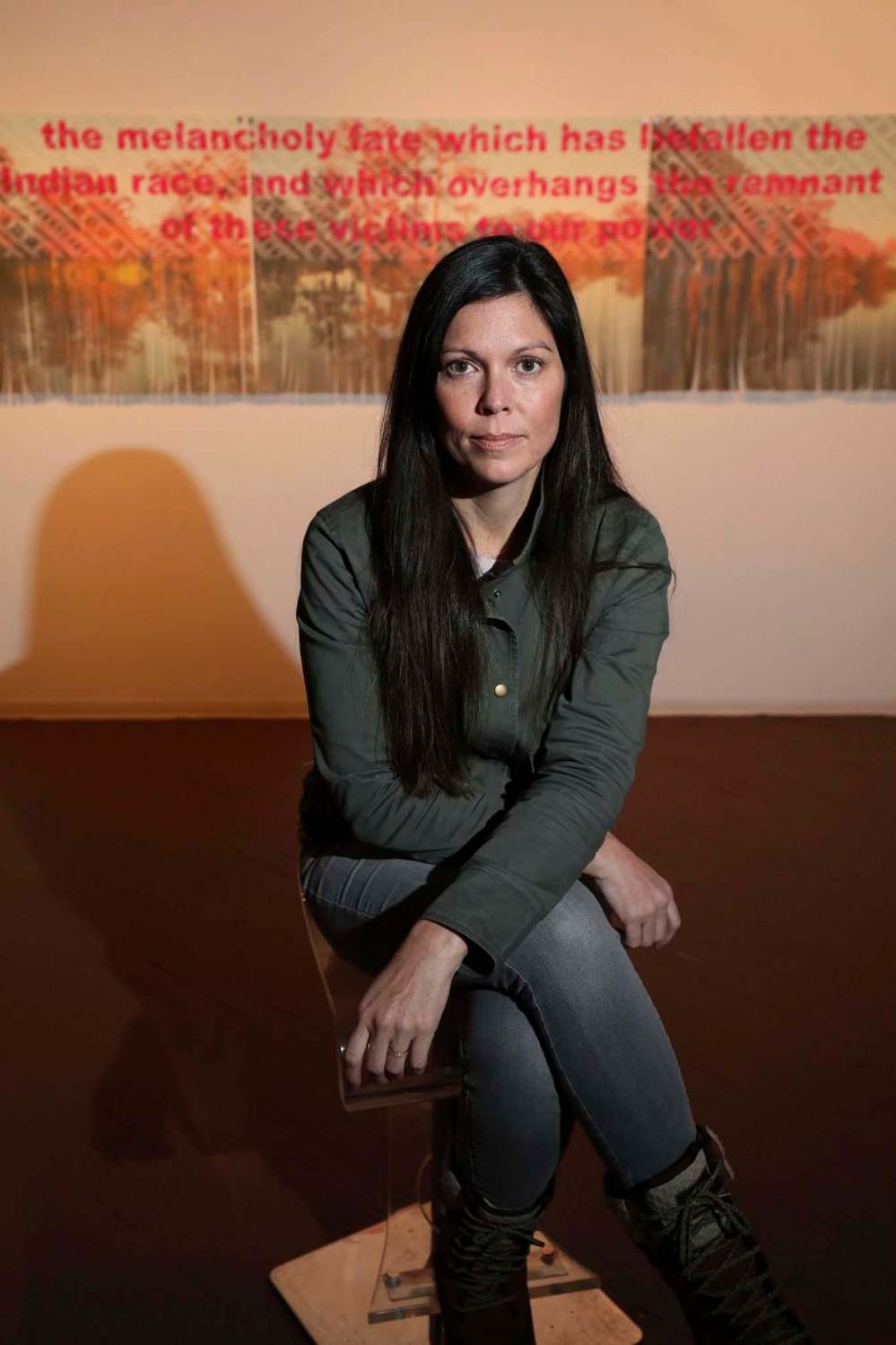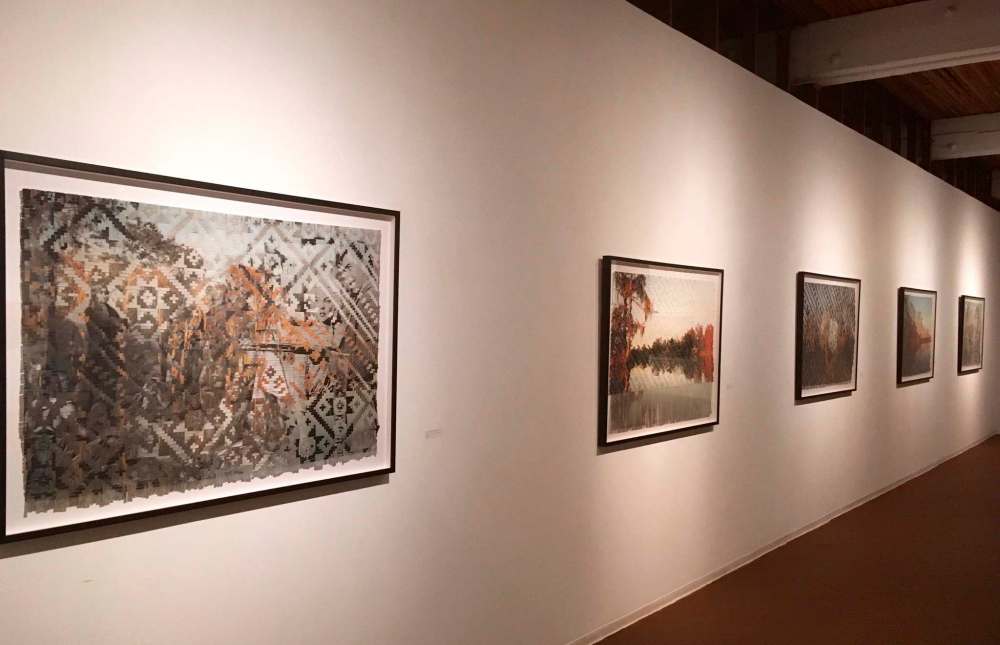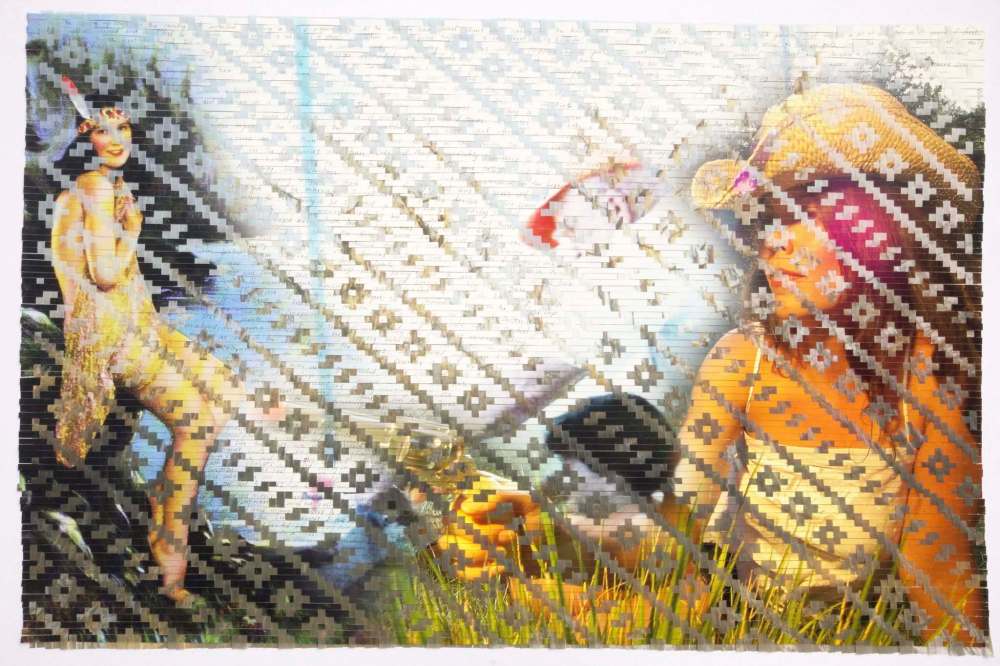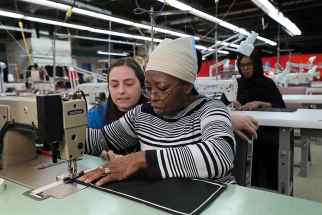Weaving a new history Artist's work blends Indigenous tradition with contemporary criticism
Read this article for free:
or
Already have an account? Log in here »
To continue reading, please subscribe:
Monthly Digital Subscription
$1 per week for 24 weeks*
- Enjoy unlimited reading on winnipegfreepress.com
- Read the E-Edition, our digital replica newspaper
- Access News Break, our award-winning app
- Play interactive puzzles
*Billed as $4 plus GST every four weeks. Offer only available to new and qualified returning subscribers. Cancel any time.
Read unlimited articles for free today:
or
Already have an account? Log in here »
Hey there, time traveller!
This article was published 14/02/2019 (2178 days ago), so information in it may no longer be current.
Many modern artists weave different ideas and themes into their work. Sarah Sense does it literally.
Art preview
Sarah Sense: Cowgirls and Indians
Urban Shaman Contemporary Aboriginal Art
● 290 McDermot Ave.
● To March 16
In Cowgirls and Indians, on now at the Urban Shaman gallery, Sense’s multimedia pieces use the patterns of traditional woven Chitimacha baskets to give stock photos of Hollywood and pop-culture stereotypes — heroes brandishing six-shooters and headdress-wearing Natives — an abstract quality.
Stand close to the works and they appear fragmentary, as the woven pattern dominates. Your eye is drawn to the foreground and then to the background, picking out a familiar face — Ronald Reagan, Sitting Bull — from amid the intricately overlapped strips of photographs printed on bamboo (a substitute for the river cane used by Chitimacha weavers) and rice paper.

Take a few steps back and the composition reveals itself. Many of the works use photographs of the eerie, serene beauty of Bayou Teche on the Chitimacha reservation, which has added significance, as the Chitimacha are the only Indigenous people in the state of Louisiana who control some of the land that originally belonged to them.
Some pieces incorporate handwritten excerpts of Sense’s grandmother’s memoirs about growing up in the American southeast, others use photos of the artist dressed as a gun-toting cowgirl pinup. It’s a surreal and beautiful blending of the real and imagined and romanticized history of Indigenous people.
Sense, born in Sacramento, Calif., draws on her own family history — her maternal grandmother, who collected woven baskets from all over the world, is Choctaw and her maternal grandfather is Chitimacha — as well as her research into Indigenous art practices from Chile to Thailand for her art.

Cowgirls and Indians revisits ideas first put forth in a series Sense began in 2004, when she was a grad student at Parsons School of Design in New York. The concept was sparked by a visit to the Chitimacha reserve in Louisiana, where a she took a photograph of tanning salon called Native Tan that led her to think about the stereotyped notion of the Hollywood Indian.
She had already been toying with the idea of using weaving in her work, so she approached the chairman (chief) of the Chitimacha Nation to request his blessing to put it in a contemporary context. Despite her familial connection to the practice, she was wary of using an important form of cultural identity for her own ends; the specific patterns in Chitimacha basketry are heirlooms that have been passed down for hundreds of years.
“I am first an artist,” Sense says, reached at her home in Bristol, England, where her new baby is asleep on her lap. “I became involved in the traditional weaving because I was pursuing a career to be a fine artist and this was a way for me to express something… Because of where I was and what I was doing — I was in grad school in New York — it seemed really relevant to me to do contemporary weaving rather than traditional. If I were living in Louisiana near the bayou, with full accessibility to the river cane and the weavers, I would have done traditional weaving, but that’s not where I was. I wasn’t that person. Because it was different, I wanted to go the top person and get permission.”

Asked why 2018 felt like the right time to reinvent the work — which is densely packed with commentary on race, violence, colonialism and appropriation — the married mother of two points to the current political climate in the United States.
“I wanted to go back to this cowboys-and-Indians theme because everything just felt relevant again. Not that it had stopped being relevant, but it’s a really simple concept for Americans or for American culture. It’s breaking everything into two, making it black and white: the cowboy, the Indian; the hunter, the hunted, on and on…” she says.
“I think we felt a sort of momentum maybe 10 years ago: ‘OK, we’re coming out of this, Native art is becoming part of the mainstream.’ It felt like an important time to be making art and being taken more seriously. And all of a sudden, whoa, maybe we’re taking some steps backward. And that notion has really been solidified for me; we are going backwards. We’re still in the fight to recognize the racism that still exists.”

As an American citizen living in Britain, Sense, 38, says she has a unique, uncomfortable vantage point from which to ponder the effects of colonialism: from within the old British Empire, gazing back at the U.S. Before she visited Winnipeg for the opening of Cowgirls and Indians, she spent three months in California, during which she witnessed first-hand the rampant wildfires in that state, and watched footage of the confrontation between the MAGA hat-wearing youth and Indigenous elder Nathan Phillips in Washington, D.C.
“With everything that is going on in the U.S. right now — and I’m rolling my eyes even talking about it because it’s so stupid — with the shutdown and the wall, and we’re ignoring climate change. We have such a huge issue to be facing globally and we’re wasting time picking apart other people’s cultures…
“We live in this new, grotesque, bizarre time. I think my part in the fight was to get back at these stereotypes, go back to Square 1.”

jill.wilson@freepress.mb.ca
Twitter: @dedaumier

Jill Wilson
Senior copy editor
Jill Wilson writes about culture and the culinary arts for the Arts & Life section.
Our newsroom depends on a growing audience of readers to power our journalism. If you are not a paid reader, please consider becoming a subscriber.
Our newsroom depends on its audience of readers to power our journalism. Thank you for your support.








